I did core exercises at home every day for 2 weeks - and they did more than make my abs stronger
Health Writer Kerry Law took up the challenge of doing core exercises at home every day for a fortnight. Here are all the benefits she found
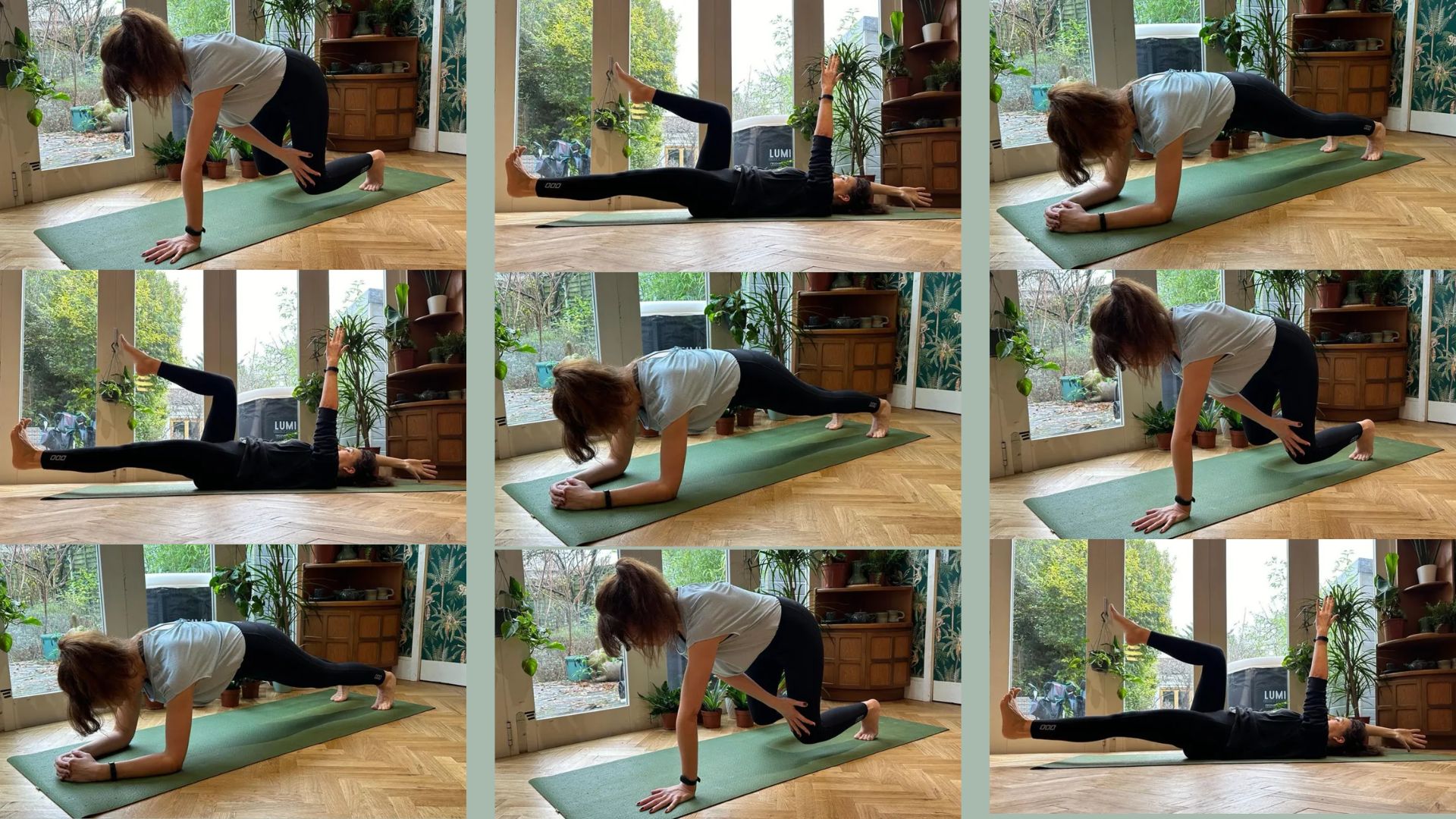
Doing core exercises at home is synonymous with achieving a flat stomach and defined abs, but that’s not what they are really about. For some, a bit more shape may be a welcome outcome, but having a stronger core goes well beyond that.
For the past fortnight, I’ve spent five minutes every day on my yoga mat attempting to do core exercises at home. This has seen me on my back, knees and elbows engaged in core exercises seemingly straight out of Planet Earth (dead bugs and bear crawls, anyone?). It's not like I have completely neglected my abdomen over the years – regular swims and yoga sessions go some way to improving my core strength – but I felt that it wasn’t enough. Would a daily core challenge produce better results, faster?
My trainer, Joanna Bennet (aka Joey Jo Fitness) - a certified personal trainer and wellness coach - recommended a set of dead bugs, bear knee taps (sometimes known as bear plank knee taps), and a two-minute elbow plank. Being one of the best yoga mat workouts you can do outside of a dumbbell core workout, these three exercises work different core muscles and can easily be modified to dial the difficulty up or down. Here's what happened when I did them every day for a fortnight...
Core exercises at home: Which ones should I do?
Dead bugs (20 reps)
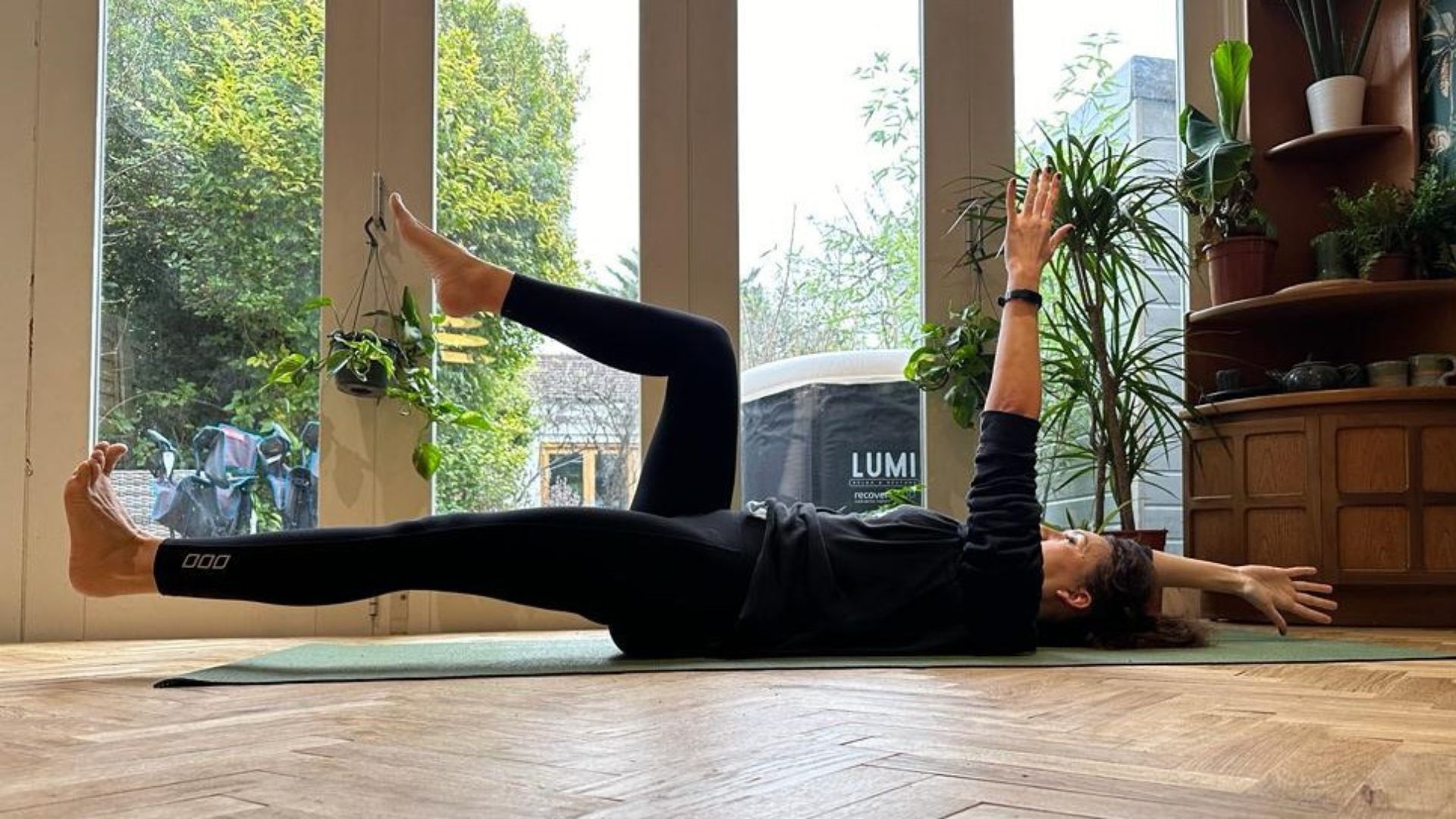
According to Bennett, dead bugs work multiple core muscles including the transverse abdominis (the deepest abdominal muscles which act like a natural corset), rectus abdominis (commonly known as your abs), and the obliques (the muscles on your sides).
“Dead bugs are good for beginners as there is little that could go wrong, meaning you’re less likely to suffer injury,” says Bennett. "They also work your pelvic floor, which is a benefit to women." It may even help you learn how to use a pelvic floor trainer, should you want to.
“The key point is the keep your neck on the ground and avoid arching the lower back,” she adds.
How to do dead bugs:
Sign up for the woman&home newsletter
Sign up to our free daily email for the latest royal and entertainment news, interesting opinion, expert advice on styling and beauty trends, and no-nonsense guides to the health and wellness questions you want answered.
- Lie on the floor in a reverse table-top position.
- Move your right arm straight behind you, while simultaneously straightening your left leg. Keep your leg close to but off the floor, before simultaneously moving the arm and leg back into the original position (one rep).
- Repeat with the left arm and right leg.
2. Bear knee taps (20 reps)
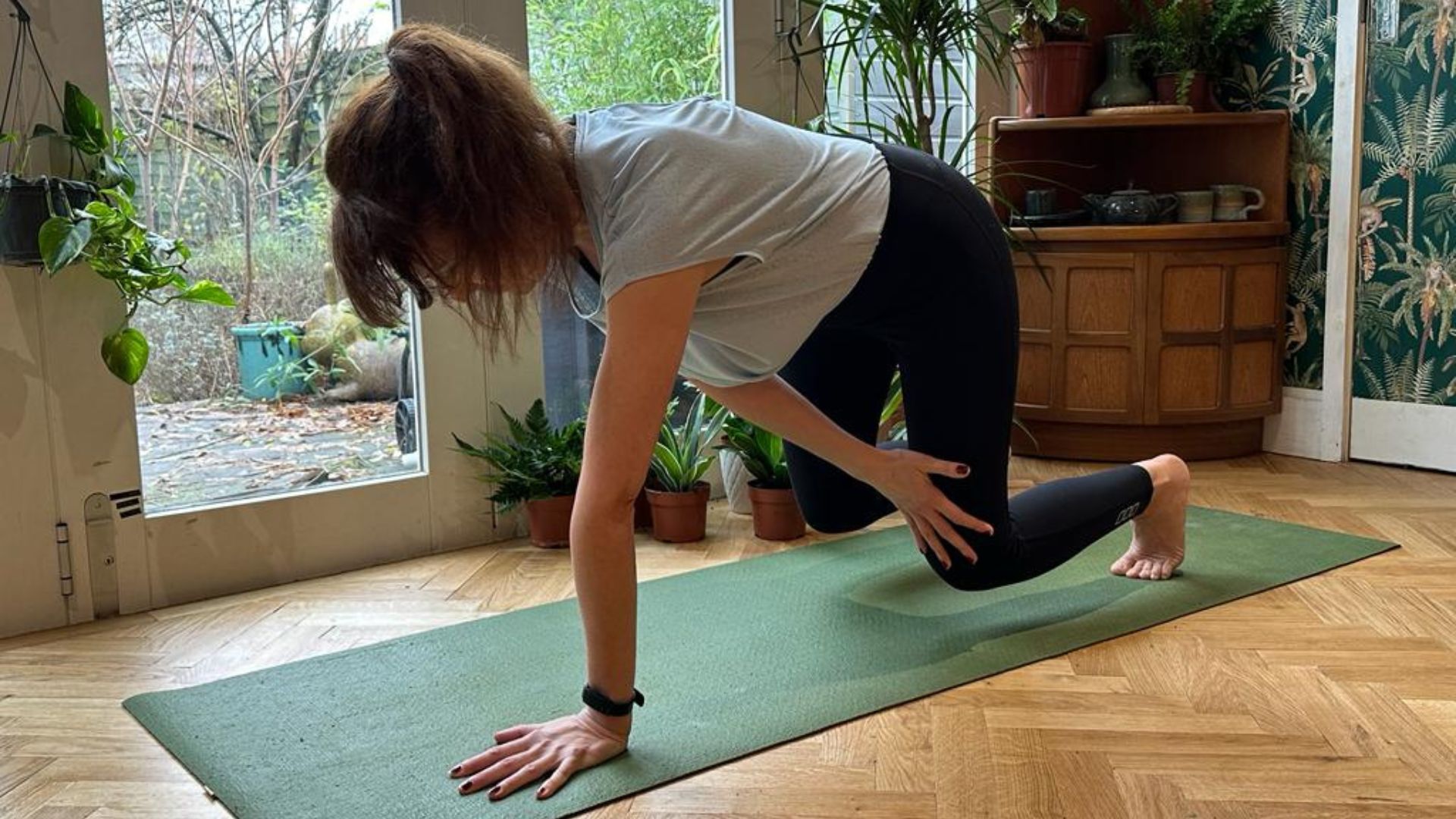
"This exercise targets a full range of core muscles including the transverse abdominis and obliques. It’s great for women suffering from diastasis recti after childbirth, as it builds deep core muscles and strengthens the pelvic floor,” she explains.
Since giving birth over six years ago, regaining a somewhat flat stomach has been almost impossible. I’ve since discovered this is likely caused by diastasis recti (DR) – a separation of the abs (the rectus abdominis) which creates a soft bulge in the tummy area. DR is common during pregnancy affecting around 60% of women, per the Cleveland Clinic. The muscles can ‘knit’ themselves back together over time, but some women will still have DR months or even years after giving birth.
Some core exercises, such as sit-ups and crunches, are a no-no if you have DR, so bear knee taps are my choice for protecting and strengthening this area.
How to do bear knee taps:
- From a table-top position, lift your knees off the ground by a couple of inches and engage your core.
- Breathe in, then breathe out as you tap your left knee with your right hand.
- Bring back to the centre and breathe in (one rep).
- Breathe out as you tap your right knee with your left hand.
- Repeat.
Bennett says the key is to inhale and exhale slowly, timing it with the movement, adding, “I wouldn’t consider this a beginner-friendly exercise as it involves strength, stamina and coordination," she says.
So, if you are new to stretching, yoga for beginners, and similar strength-related workouts, a bear position for ten seconds without the knee taps would be better, says the trainer.
3. Elbow plank (2 minutes)
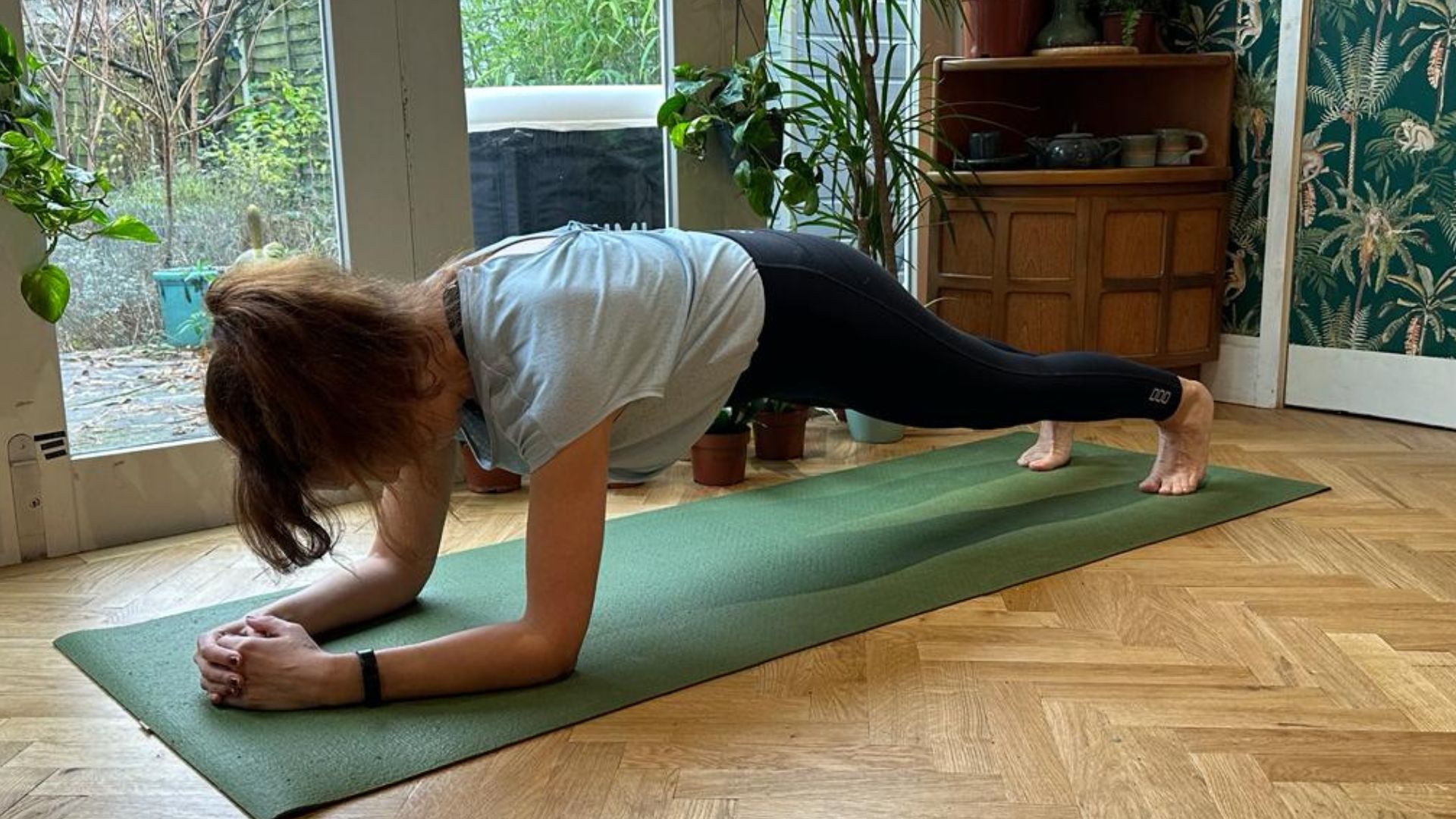
Bennett believes that, unless medical reasons prohibit it, a plank should be part of everyone’s routine of core exercises at home: "It’s not just a core exercise," she says. "It engages several other muscles in the body [such as biceps, triceps, quads and glutes].”
How to do an elbow plank:
- On the floor, stack your elbows directly under your shoulders and extend your legs straight.
- Rest your body weight on your elbows and toes.
- Squeeze your glutes and core to create full-body tension.
- Ensure a straight line from your head (gaze downwards) to your heels.
Bennett adds, “When people get tired, I often see them stick their bum up, or their elbows shift away from being directly beneath their shoulders, but this should be avoided. Start with a 30-second plank and increase the duration gradually.” As I was a regular to minute-long plank, we decided that a two-minute version felt like enough of a challenge but still achievable.
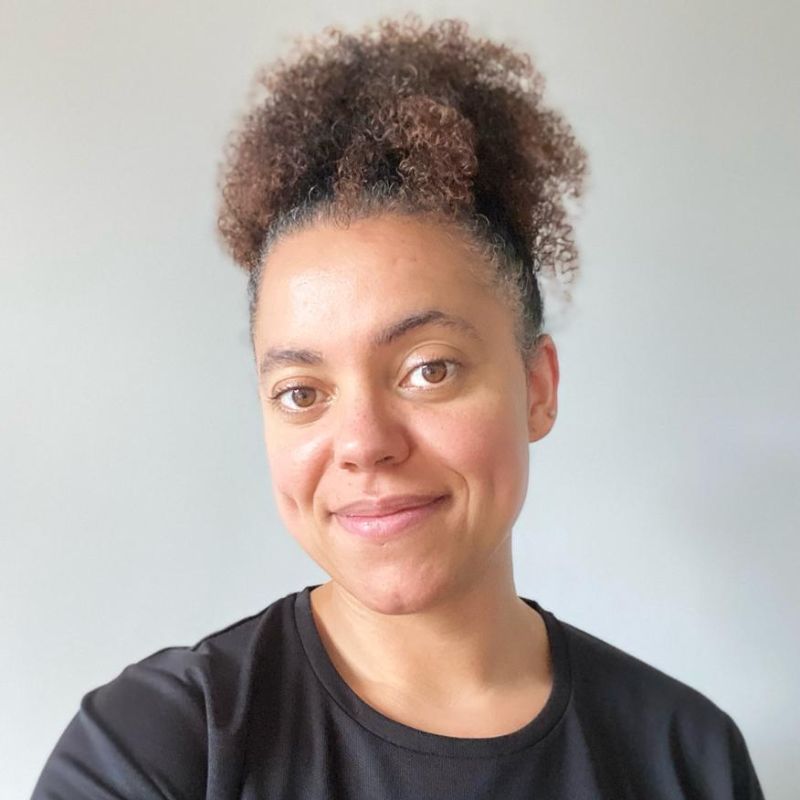
Joanna is a Level 3 (soon to be Level 4) qualified personal trainer and online wellness coach. She is passionate about helping people achieve their goals, whether that is weight loss, strength gain, confidence in the gym or to become healthier versions of themselves, through her training and nutritional advice. She aims to make positive lifestyle changes and teach clients how to train safely and effectively to meet their goals, especially if they have limited time for the gym. She offers 1-to-1 and small-group personal training sessions and online coaching.
Benefits of doing core exercises at home for two weeks
1. It's a full-body workout
Our core is made up of layers of foundational muscles that run along our back and hug our abdomen, from the ribs to the pelvis. These muscles all have different functions, allowing us to twist, bend or flex the spine. As a whole system, they keep us stable. A strong core should make other exercises and everyday movement easier, and reduce the risk of pain and injury.
I started this challenge to improve the strength of my abdomen, but by day three I was feeling the effects all over my body - similarly to when I do a resistance band leg workout. My arms and shoulders were aching from long holds in bear and plank position. The bear pose was also hard on my quads, glutes and calf muscles.
All of them felt the stretch from the dead bugs, so this can be a great exercise to incorporate into other training programs like strength training for runners or Pilates for strength training as it targets most of the major muscle groups in both the upper and lower body.
Plank is often named one of the best full-body workouts. A study by Pennsylvania State University found core exercises that activate multiple muscle groups, such as plank, were more effective at maximising strength and improving endurance than isolation core exercises, such as crunches.
2. Doing a plank can lower your blood pressure
Continuing its reputation as a must-do exercise, a 2023 study found that isometric (static) exercises such as plank, are among the best ways to lower blood pressure.
Researchers from Canterbury Christ Church and Leicester universities analysed the results of 270 clinical trials involving almost 16,000 participants, looking at how particular forms of exercise affect resting blood pressure. They discovered that exercises, where tension is held within the muscles without moving, such as planks and wall sits, were almost twice as effective as aerobic exercises and HIIT workouts at reducing blood pressure.
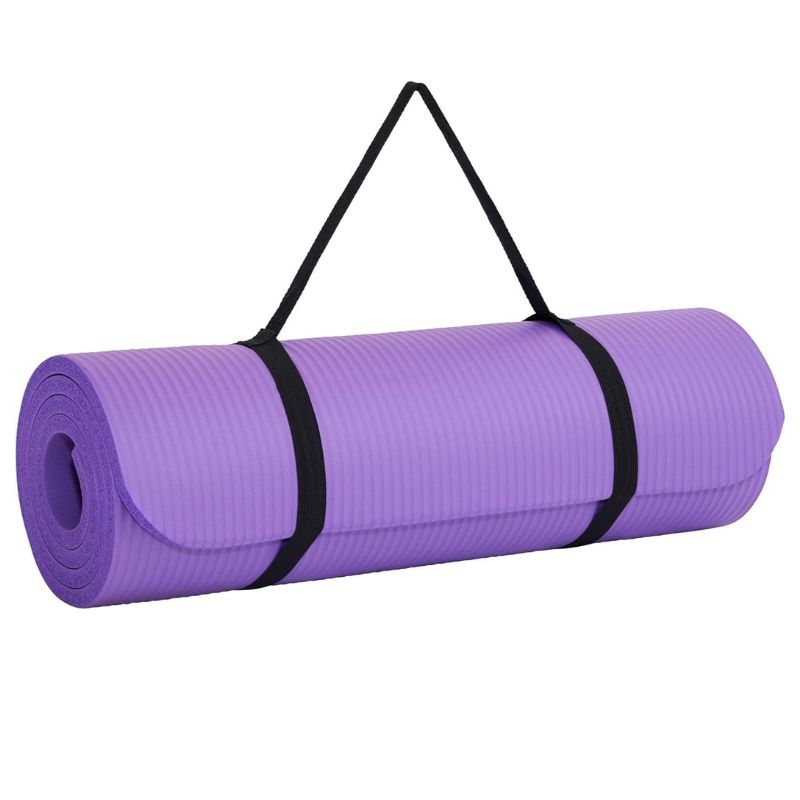
A yoga mat is a pretty essential piece of kit when it comes to doing core exercises at home, but it doesn't have to cost the earth. This one from Amazon is under £11 and offers a plush 8mm of thickness.
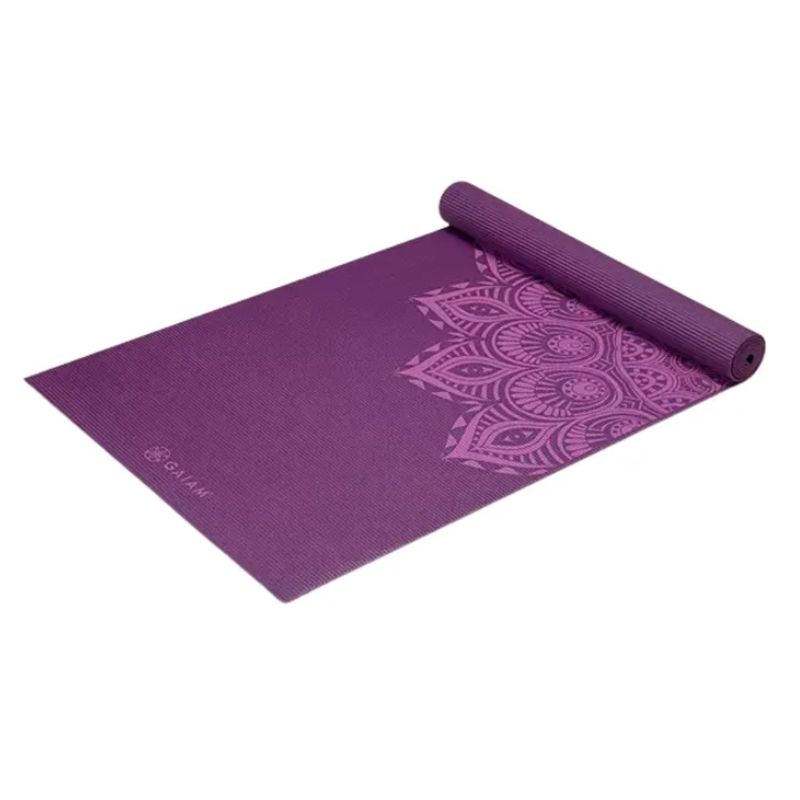
Our pick of the best thick yoga mats, the Gaiam Premium Mandala mat is 6mm thick and offers plenty of support for the knees, elbows, and lower back during these core exercises.
 Premium yoga mat
Premium yoga mat
The Lululemon (Big) Mat is one for taller yogis and those who want plenty of space to stretch out in their core workout. At 5mm, it's thicker than our other favourite, the Lululemon's Reversible Mat and comes in a choice of two colours.
3. Core exercises can reduce back pain
According to Harvard University, having a strong, flexible core is the bedrock of healthy movement. Strengthening the muscles that support your spine and abdomen and doing core exercises at home means you can twist, bend and stretch without pain or injury.
After two weeks of daily core exercises, I did notice that lower back pain niggles were fewer and further between and there is a growing body of evidence to support the effectiveness of core exercises in alleviating back pain. For example, in one study by Sun Yat-sen University, women over 60 who suffered from lower back pain were placed into two groups - one receiving conventional physiotherapy and the other receiving physiotherapy alongside a core stability workout.
After four weeks, the group completing core training four times a week recorded significantly better results in mobility tests, and displayed thicker transverse abdominal muscles.
Lower back pain was one reason I took up doing core exercises at home in the first place. With my desk-based job came discomfort and I started to wish my core was stronger. I wanted to dedicate part of my exercise routine to a simple sequence to target key core muscles, ultimately creating a strong bedrock for the rest of my body.
4. Build mental strength
It’s not just your physical body that’s getting a workout. Completing slow repetitions and long holds, while your body shakes with fatigue, involves the mind more than I anticipated. Every time I started my plank, it felt like I wasn't going to reach 30 seconds. Slowing down my breathing and relaxing my hands rather than clenching my fists helped, but it was a surprising level of mental strength that got me to the end every time.
Seconds felt twice as long so I had to distract myself with some basic arithmetic to help time fly by faster (“halfway there…three-fifths of the way there…”). I also had to be my cheerleader, reminding myself I had achieved the two-minute mark several times already after day five. And when it felt like every tiny muscle in my body was giving up, I would finally hear the beep of the two-minute alarm. It was good to know I could exceed my expectations day after day.
5. Core strengthening can be an exercise in mindfulness
Who knew that doing core exercises at home could be a relaxing exercise in mindfulness as well? Monique Eastwood, personal trainer to celebrities including Emily Blunt and Anne Hathaway, emphasises the importance of connecting your breath to your movement when targeting the core.
"With any core workout you choose, make sure you focus on the correct breathing to activate the deep core muscles as you complete a movement. I always remind my clients to breathe using a lateral breathing pattern [a beginners' Pilates technique] with a strong exhale,” she says. For instance, with dead bugs, “it’s important to connect to your deep abdominal muscles and use a strong breathing pattern throughout.”
This naturally slows the pace, making you hold muscles in challenging positions for longer. It also helps connect mind and body, as you tune in to counting reps or watching the seconds tick down.
Of course, slow and deep breathing has a physical benefit and has long been associated with pain management. A scientific review by KU Leuven University and Maastricht University found that paced slow breathing was associated with pain reduction, although experts are unsure as to why. One theory is that the pace of our breathing affects the pH level of our blood. Fast and shallow breaths raise the pH, and slow and low breaths decrease it. By breathing deeply from our diaphragm when experiencing pain, we can help our bodies run smoothly and therefore reduce the perception of pain. When pushing through the pain barrier in a bear-hold, this helps.
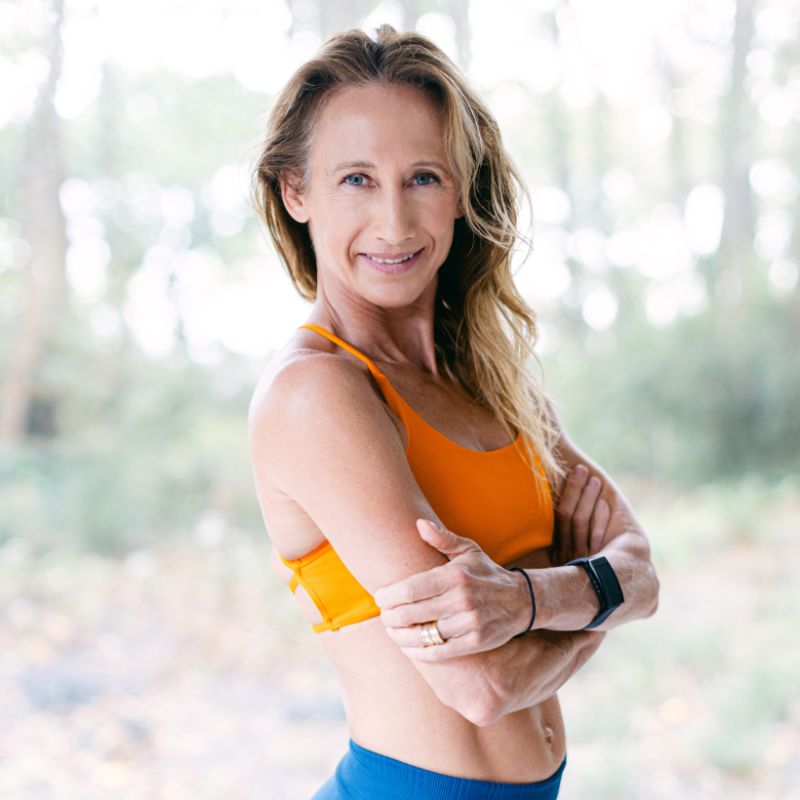
Monique Eastwood, 55, is the woman behind the bodies of A-listers including Emily Blunt, Anne Hathaway, Ruth Wilson and Stanley Tucci. Known for sculpting bodies that are strong, athletic and powerful, Monique is a powerhouse trainer with decades of experience teaching people of all ages and stages via her Eastwood Fit app. As a former professional ballerina and dancer, Monique combined her love of dance with her knowledge of Pilates and fitness to create her unique Eastwood Movement Method, which prioritises multidirectional movement with a focus on posture, technique and alignment.
What's a good alternative to core exercises?
My workout can be modified to increase the difficulty and work additional muscles. Bennett suggests making a plank harder by adding shoulder taps in a high plank position: stretching out the opposite arm and leg then alternating (also known as ‘bird dog’) or doing an up/down plank from elbow to high plank and back again.
Eastwood suggests adding a side plank with knee taps if you're looking to make your core exercises at home harder. She says: "This exercise challenges your core as it keeps the shoulder girdle stable, the abdominal muscles engaged and the pelvis in neutral at the start and the finish of each move. The scoop and lowering of the hips will add that extra challenge to the oblique muscles too."
How to do a side plank:
- Start in a side plank on your forearm with legs bent and stacked together in line with the hips.
- Lift the top leg, still bent, and dip it down towards the floor in front of you, with a lower abdominal scoop and slight lowering of the hips.
- Lift the leg and hips back to the starting position, and repeat.
- Switch sides and repeat your reps.
Some full workouts can also focus on the core enough to be a good alternative to core exercises. For example, you could try a Pilates abs workout, a core-focused Pilates with weights workout, or a STOTT Pilates workout.
How long does it take to strengthen a weak core?
Evidence suggests that most people can start to see changes in their core strength at the 4 to 8-week mark. However, it's all about awareness and consistent practice with core exercises at home, Eastwood says. Not just completing your daily core exercises but also focusing on good posture and alignment throughout the day.
She says, "The more you practise and focus on your core, the faster you will notice results. By sitting, walking and training your body with a heightened awareness of your deep core muscles and how to activate them, you should notice a significant improvement within a month."

Kerry is a freelance writer covering health, fitness and wellbeing. With bylines in several national publications alongside woman&home - including Stylist, Red, Metro, Good Housekeeping and more. She has written about the latest news and trends in exercise, nutrition, mental wellbeing, alternative health, ecotherapy, health tech, relationships...in fact, anything that impacts our bodies and minds. Outside of work, she can be found doing her most important job (parenting) while trying to squeeze in time for exercise and escaping into nature whenever possible.
-
 Ranvir Singh’s denim midi dress is perfect for April date nights
Ranvir Singh’s denim midi dress is perfect for April date nightsYour favourite jeans will always be an easy outfit staple but denim dresses have the same comfort factor and more elegance.
By Emma Shacklock Published
-
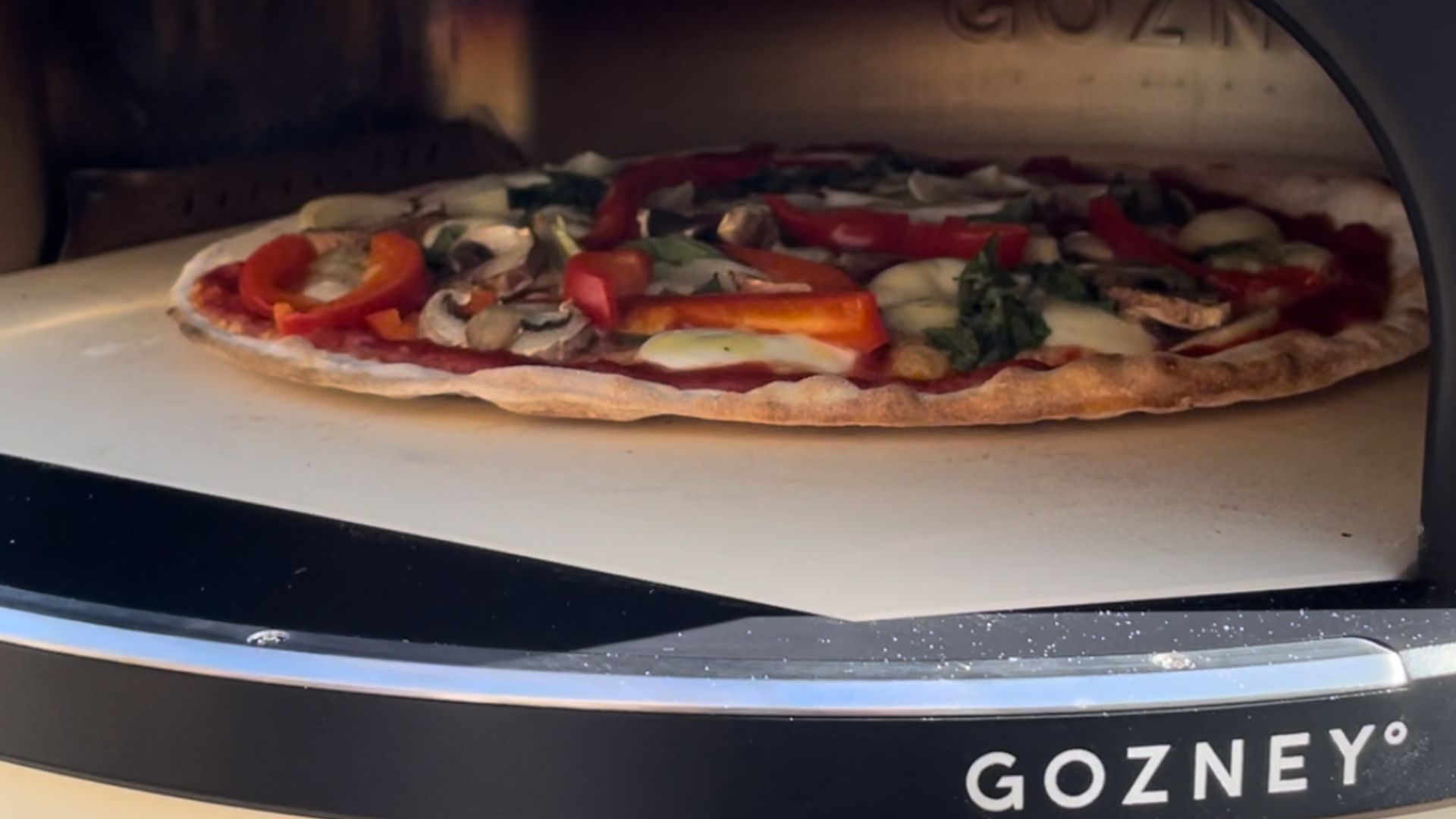 My family runs a pizza business - this is the pizza oven we use when we're not on the clock
My family runs a pizza business - this is the pizza oven we use when we're not on the clockThe Gozney Arc is a sleek, elegant pizza oven offering dual-fuel cooking, modern design features, and a robust, durable build. Here's everything you need to know.
By Laura Honey Published